US-Sport
NFL: Column: Jags must act – can you still win with defense?
With week 7 in the rearview mirror, some central questions arise: To what extent can you still win with defensive football today? Have the Jacksonville Jaguars finally realized their mistake – and what are alternatives to Blake Bortle’s? And how aggressive should they be? In addition: MVP discussions, modern run game and whose trainer’s chair wobbles the most?
You want to ask questions to the SPOX-NFL column? This goes right here to the author!
The Jaguars may have ushered in the beginning of the Blake Bortles era on Sunday. With the willingness to take out Bortles during the Texans duel and coach Doug Marrone’s subsequent comment that the quarterback situation is “open”, it’s clear that Bortles has a very short leash, even though he may restart the London game against the Eagles next week.
All the more ironic is the fact that ESPN insider Adam Schefter reported just before this game that Jacksonville sees the quarterback position internally as “the least problem” and that a trade for another quarterback is not considered. Amazing in itself, the game against the Texans and ultimately the decision to replace Bortles with Kessler – a player who was ultimately hired to cement Bortles’ position as a starter – must bring this question back to the table. At least.
The problem with Jacksonville and Bortles has always been that Bortles, with his occasionally spectacular appearances, but too often outside the top 25 on his position, was exactly the quarterback that didn’t fit into the structure of this Jaguars team at all. A Jaguars team that needs nothing but a safe, solid game manager with a stable, average baseline to compete.
The fact that the Offensive Line became an increasingly big problem this year, Andrew Norwell’s commitment has been disappointing so far, injuries have decimated the Receiving Corps and drops are shaping this Jaguars season in the passing game is of course of little help. But the question must also be allowed: Didn’t the Jaguars just put their team together philosophically wrong?
This year, the defense itself will not play at the dominant level of the previous year. Against the Cowboys there were several coverage breakdowns in the Soft Zone Coverages, which should not be too popular internally with the players anyway and also don’t seem advisable in view of the Jags personnel in the Secondary. The pass-rush is not as dangerous and from snap to snap not as devastating as last year, even though the individual quality is still high.
The Jaguars Defense last year was particularly strong due to sacks, turnovers and the Red Zone Defense, three from year to year rarely consistently durable categories. And this against the background that defensive production and defensive performance are statistically subject to greater fluctuations from year to year anyway than on the other side of the ball.
Of course, it helps to have a very good pass defense. But today you have to be able to constantly (!) win even games by passing; otherwise you will encounter obstacles in games that you simply can’t overcome.
Whether rule changes in the past years, which nearly all strengthen the offense – quite up-to-date of course the new bag rule -, the fact that the NFL opens itself in the meantime finally offensively for “college elements” or also generally a high quarterback level up-to-date: even the best Defenses can be taken apart in each play and it is by no means a coincidence that week after week Passing records of all kinds fall.
We live in the age of the passing game, and if you don’t accept that and build up your team accordingly in terms of coaches and players and treat the quarterback position accordingly, you fall behind. If you want to build up your offense over a run game and behave the same way in play-calling and team-building, you will soon come across as a dinosaur trying to slow down a game that rushes past you.
Jacksonville was designed last year to take their own lead in the back to manage games offensively and win defensively: The Jags scored their first points in twelve games in 2017 – they won ten of them. This year they stand at 3-0 in the same scenarios, and at 0-4 if the opponent scores first. As the Jaguars have put together their team, they will be more limited in today’s NFL and more dependent on different circumstances than other teams.
In the end, one clear question remains: Which options remain for Jacksonville? The defense can still be very good, but it is not (yet?) back to the elitist level of the previous season. And if you look at the developments in the NFL, then you can also ask whether a dominant defense today is still sufficient for the big throw.
In order to at least give the still very good defense a chance and make the most of the window of this unit, Jacksonville should finally switch to the absolute Win-Now mode; something that the Jaguars successfully ignored in spring in the Free Agency and then in summer in the preseason – especially with Teddy Bridgewater on the trade market. This means above all that Jacksonville must be able to score more consistently on the offensive, even if it is lagging behind.
This team must not fall apart permanently when it has to catch up a 2-score gap – which of course raises the question: who would be available at all? Would the Saints be willing to trade Bridgewater again for a second lap pick? What about Ryan Fitzpatrick? Nick Foles? Tyrod Taylor? All these candidates would be available and in the least case as serious competitors in Jacksonville’s current quarterback situation immediately a help.
Jacksonville has put his window on this defense long enough with Bortle’s week after week. It’s five to twelve, the Jaguars should react now.
The follow-up to the defense question in today’s NFL revolves around the current best defense in the league: the Baltimore Ravens. The Ravens are the only team currently capable of completely dominating bad teams and regularly limiting damage against offenses with a lot of firepower – with the exception of the Bengals game.
This can be justified centrally with two pillars on which this Ravens defense stands next to the individual quality. Baltimore has perhaps the most experienced defense in key positions and uses this to play the most schematically complex defense in the league today.
Baltimore acts defensively and extremely flexibly. In general the Ravens play a lot of nickel, three cornerbacks – Jimmy Smith hasn’t returned yet – already have over 200 cover snaps on their account. But they also like to play Big Nickel, so with three safetys instead of three cornerbacks; next to Tony Jefferson and Eric Weddle Anthony Levine comes on the field.
The Ravens also love to use their safetys to hide coverages, bring players into matchups unexpected to the offense, and play DB flashes at the same time: The Ravens already have four defensive backs (the three Safetys and Cornerback Tavon Young) with at least one bag each.
In addition, Baltimore is not only aggressive in its lightning and pressure packages, but also versatile. In an early long third down of the Saints, for example, Baltimore plays an overload flash that is used comparatively rarely at least in this game, where the right side of the front falls back completely in coverage, while four players attack the other side.
This also fits to another quality: The ravens repeatedly deliver the line of scrimmage with different players – independent of the down – in order to bring pressure from different directions and then again from a similar formation the players, who just flashed, are pulled back into coverage after the snap.
All these elements also serve to make the pre-snap reads more difficult for the quarterback and to delay the post-snap reads. The quarterback should know as rarely as possible where the pressure comes from and which players fall behind in coverage.
The last week against the Titans was quite striking, when ten of the eleven sacks came off at Plays, where Mariota still had the ball in his hand at least 2.5 seconds after the snap. This was actually achieved against Brees, who – completely atypical for his game – held the ball in his hand for 2.5 seconds or longer in almost 42 percent of the dropbacks. The fact that he still got so little pressure is a great praise for his own offensive line.
Because the Ravens love to actually flash, just as they do with this ultra-aggressive double-corner flash, and mind you, the first down of the Saints. No false restraint, no safety-conscious play calling – Baltimore lets both cornerbacks fire the Edge Flash, and actually it’s a sack – if Jimmy Smith could also bring Brees to the ground.
Baltimore, who can afford this aggressive approach with a deep, very strong coverage unit, have flashed in at least a quarter of their opponents’ dropbacks in every game this season and had already played two games with a lightning quota of over 55 per cent (Browns, Titans) before Sunday’s game – against the Saints another one was added, Baltimore flashed Drew Brees in 58 per cent of his dropbacks.
Against one of the NFL’s most dangerous screen and short pass openers, this also shows confidence in his own qualities – even though Brees only bagged one sack at 18 Blitzes, passed eleven of 17 passes and threw a touchdown pass. This in turn describes Brees’ class.
The most frustrating lightning from Ravens’ point of view came shortly before the end of the third quarter. Baltimore often had the right defensive play call in this game, Brees just destroyed it – just like in this absolutely critical play.
The Ravens led 1:22 minutes before the final quarter with 17:7, it was a long third down deep in the Saints half. Baltimore again reached deep into the Blitz box and got a defensive back/linebacker Triple-A-Gap-Blitz out of the second level! A great call, and the low DB also got through freely on Brees, hung on him – but still couldn’t prevent the pass. Brees’ Pass almost landed at the Line of Scrimmage with Michael Thomas, who fought for the First Down with an outstanding individual performance.
In the end, the Ravens had only eight individual pressures, Strong Safety Tony Jefferson was the only player to have two, and Brees was under pressure at only six of his 31 dropbacks.
Nevertheless, Brees had his lowest yard yield this year (212), remained well below his average yards per pass (7.1), and had his second worst game of the season in terms of completion percentage (73.3 percent), while Alvin Kamara (3.8 yards per run) and Mark Ingram (2.7) both failed to reach the 4-yards per run mark.
Only the first PAT miss in Justin Tucker’s career prevented at least overtime in the end, yet it was a positive game for a Ravens defense that has a clear identity and can provide a little balance in a season completely dominated and dictated by offenses.
Page 1: Jaguars must act, a basic question – and the best defense of the NFL
Page 2: AFC Playoffs, MVP, Rams, Bears, Wobbly Trainer Chairs – Your Questions


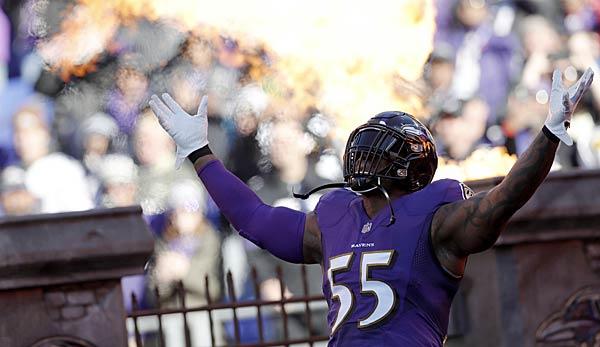

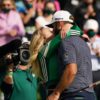


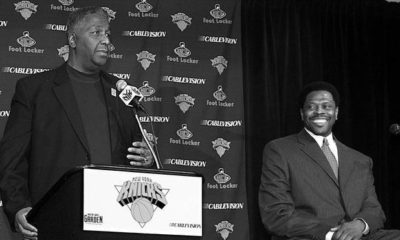
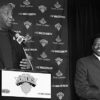
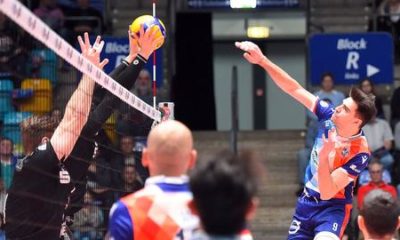
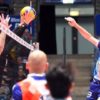
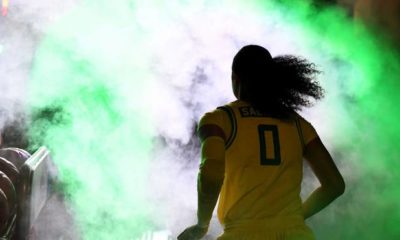
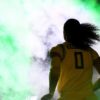





You must be logged in to post a comment Login